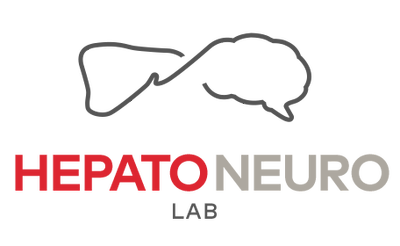Hepatic encephalopathy (HE) is a neuropsychiatric syndrome, a major complication of chronic liver disease (CLD/cirrhosis). With an increasing prevalence of obesity-induced cirrhosis and evidence linking blood-derived lipids to neurological impairment, we hypothesize that obesity increases the risk, severity and progression of HE. AIM: Development of an animal model of cirrhosis and obesity to investigate the synergistic effect of obesity and CLD on the development of neurological impairment and HE. M&M: Animal model of CLD and HE: 6-week bile-duct ligation (BDL) rats, as well as Sham-operated controls, were used. Inducing obesity: High-fat diet (HFD) was given for 3 weeks before BDL or Sham surgery. Groups: 1. Obese-BDL rats received HFD for 3 weeks pre-BDL and regular diet (RD) for 6 weeks post-BDL; 2. Lean-BDL rats received RD pre- and post-BDL; 3. Lean-Sham rats received RD pre- and post-Sham surgery. Behaviour: Recognition memory, motor coordination and muscular strength were assessed before surgery, as well as 3 and 6 weeks post-surgery using the novel object recognition, rotarod and grip-strength tests, respectively. Body-composition (echoMRI): Fat vs. lean mass and free water (ascites) were also monitored. RESULTS: Before the surgery, body weight (BW) and fat mass of rats on HFD (Obese-BDL) were increased in comparison to rats on RD (Lean-BDL and Lean-Sham). 3 weeks after surgery, BW, fat mass, lean mass and free water were increased in Obese-BDL rats vs. Lean-BDL rats. Long-term memory was reduced in Obese-BDL, but not in Lean-BDL, vs. Lean-Sham rats. 6 weeks after surgery, similar to Lean-BDL rats, Obese-BDL rats lost BW, fat and Lean mass, while free water increased vs. Lean-Sham rats. Motor coordination, forelimb strength and long-term memory were impaired in Obese-BDL rats in comparison to Lean-BDL or Lean-Sham rats, whereas hind-limb strength and short-term memory were impaired in both Obese- and Lean-BDL rats, compared to Lean-Sham rats. CONCLUSION: HFD induces obesity features in healthy non-cirrhotic rats. Such effects are maintained in cirrhotic-BDL rats. Obesity also accelerates the accumulation of free water in cirrhotic-BDL rats. Interestingly, some neurological impairments are detected in Obese-BDL but not in Lean-BDL rats (long-term memory), while others are exacerbated (motor coordination, forelimb strength). This new animal model of CLD and obesity suggests a synergistic effect, which accelerates and worsens the disease-associated abnormalities observed in CLD and HE. Thus, obesity-induced cirrhosis in patients may result in more complex neurological manifestations, suggesting more susceptibility to poor neurological performance.

